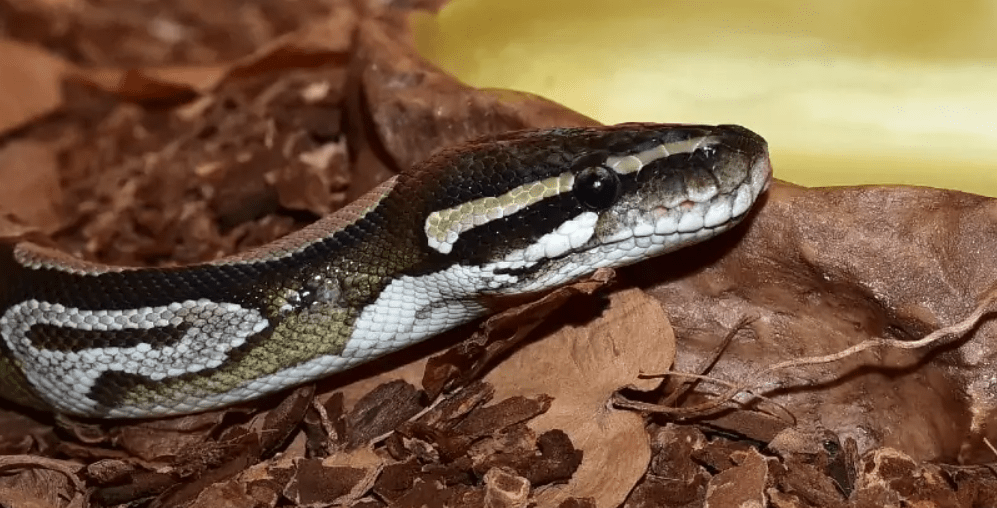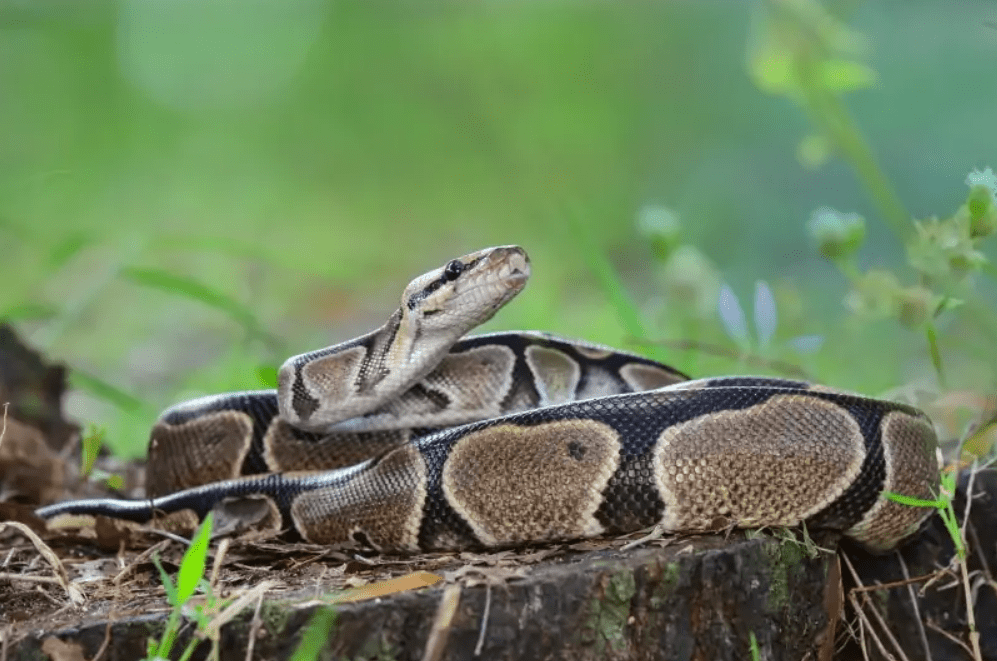One of the most common pet snakes, the Axanthic Ball Python is a color variation of the Ball Python and is quite easy to care for. The Axanthic Ball Python has a similar appearance and behavior to the Ball Python, except that its color has shades of white, black, and gray.
The name “Axanthic” refers to a type of snake that is neither yellow nor red. and instead only produces gray, brown and black. As a recessive mutation, Axanthics is a rather unusual color mutation. However there is a common pattern to all Ball Pythons.
You’re sure to come across the names of well-known morph lines, such as VPI, Jolliff, Snake Keeper, and Marcus Jane—while reviewing the Axanthic Ball Python here are the Axanthic morph breeders who produced these four snake bloodlines.
Before you bring home this beautiful and enchanting snake, let’s see how to care for snakes.
Quick Facts about the Axanthic Ball Python Morph
| Species Name: | Python regius |
| Family: | Pythonidae |
| Care Level: | Easy |
| Color Form: | Black, white, and gra |
| Lifespan: | Up to 40 year |
| Adult Size: | 3–4.5 feet |
| Diet: | Frozen but thawed rats or mice |
| Minimum Tank Size: | 40+ gallons |
| Temperature & Humidity: | 75º–85° F with 90° F basking area and 60% humidity |
Table of Contents
Do Axanthic Ball Python Morphs Make Good Pets?

You’re sure to come across the names of well-known morph lines, such as VPI, Jolliff, Snake Keeper, and Marcus Jane—while reviewing the Axanthic Ball Python here are the Axanthic morph breeders who produced these four snake bloodlines. They also require little maintenance. They usually don’t require much care, supervision or exercise. Both feeding costs and vet costs are quite small.
Axanthic Ball Python Appearance

The axanthic morph comes in white, black, and gray, as you may have noticed. However, this mostly happens when they are young. “Brown” means the adults are starting to turn brown.
How to Take Care of an Axanthic Ball Python Morph
Habitat, Tank Conditions & Setup
Tank
A 15-20 gallon vivarium is recommended for young Axanthics, while a 40 gallon tank is the minimum for adult Axanthics. Two hiding places (boxes or hideouts), one in a cooler place and one where the snake basks in the sun This is what you should give your snake. It’s best to give your snake a water dish containing only bottled water. Never use tap or distilled water Every day, you should clean the vivarium by removing dirty or damp surfaces. Clean the tank thoroughly every month or two.
Lighting
They do not require special lighting. But keep the terrarium away from the window. Because you can’t control the temperature there. Just make sure the day/night cycle is observed as closely as possible.
Heating (Temperature & Humidity)
A basking lamp is required that only heats one third of the snake’s space. Snakes need a warm and humid environment in their enclosures. Many covers have heating bands attached to the bottom.
The average temperature should be 82°F, with the cooler side between 75° and 80°F and the warmer side between 88° and 92°F should be between 50 and 60%.
Substrate
To maintain ideal humidity levels The bed must retain moisture. Although there are many texture options to choose from. However, cypress mulch is very good at retaining moisture and resisting mold growth. Aspen shavings, coconut fiber, and reptile skin are additional options to consider.
Feeding Your Axanthic Ball Python Morph

Adult Axanthic Ball Python should only be fed mice or medium sized rat food every 1-2 weeks. Small rodents should be given to young snakes once a week. The bait should be the same size as your Python. Additionally, you should only feed your snake frozen rat snakes that you have thawed. You should never give your Axanthic morph live prey, as the rodents will defend themselves and possibly attack your snake.
Keeping Your Axanthic Ball Python Morph Healthy
Common Health Issues
Axanthic pythons are strong snakes and rarely cause health problems. However, this snake often experiences the following problems:
Lifespan
Axanthic Ball Pythons generally live between 30 and 40 years, although some can live up to 60 years! If you maintain proper health, nutrition and vivarium care for your Axanthic morph, it will live a long and healthy life.
Breeding
This gene must be present in both parents to develop the color of the Axanthic morph. Homozygous status is required for the recessive Axanthic morph gene. The Ball Python breeding season is from early November to mid-March. When raising snakes, the cage temperature should drop to the mid-70s at night and reach 80 degrees Celsius during the day. To simulate winter weather conditions The number and frequency of breastfeeding for women should also be reduced gradually. Men must weigh at least 1.5 pounds and be healthy. and over 18 months old. The lockout process can take anywhere from four hours to two days. During this time, both tails are tightly wrapped.
Are Axanthic Ball Python Morphs Friendly? Our Handling Advice
Ball of Axanthic every four to six weeks A python sheds its entire skin in one piece. to help the flow you can give your snake a large bowl of water and put moist moss inside the snake’s skin. Avoid handling the snake while it is molting and do not pull the skin. Although Axenthic pythons do not hibernate, you may see them stop eating for several weeks or months during the winter. This is normal. They may hibernate from September to April. Instead, they emerge from their shells as temperatures warm.
Axanthic Ball Python Morphs Price
Axanthic prices can vary greatly depending on pedigree. Currently, prices can range from $200 to $15,000. if it is very exotic and has very striking colors and patterns. The price may be much higher.